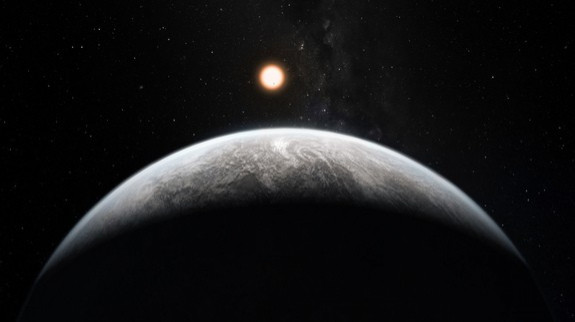Richest Haul of Planets Ever Found Includes 16 New Super-Earths

Scientists say they have discovered 50 new exoplanets, including 16 super-Earths, orbiting nearby stars, making it the largest number of such planets ever announced at one time.
The HARPS team, led by Michel Mayor of University of Geneva, Switzerland, made the discovery and presented the findings at a conference on Extreme Solar Systems. The conference brought together 350 exoplanet experts, who met in Wyoming.
The harvest of discoveries from HARPS has exceeded all expectations and includes an exceptionally rich population of super-Earths and Neptune-type planets hosted by stars very similar to our Sun, Mayor says in a press release. And even better - the new results show that the pace of discovery is accelerating.
The HARPS spectrograph on the 3.6-metre telescope at ESO's La Silla Observatory in Chile is the world's most successful planet finder as it measures the radial velocity of a star with extraordinary precision.
A planet in orbit around a star causes the star to regularly move towards and away from a distant observer on Earth. And because of the Doppler effect, this radial velocity change induces a shift of the star's spectrum towards longer wavelengths as it moves away -- redshift -- and a blueshift (towards shorter wavelengths) as it approaches.
HARPS measures this tiny shift of the star's spectrum and it is used to infer the presence of a planet.
In the eight years since it started surveying stars like the Sun using the radial velocity technique, HARPS has been used to discover more than 150 new planets.
About two thirds of all the known exoplanets with masses less than that of Neptune were discovered by HARPS. These results took several hundred nights of HARPS observations.
Scientists will be pushing HARPS to the next level of stability and sensitivity to search for rocky planets that could support life by upgrading both hardware and software systems. They say 10 nearby stars similar to the Sun were selected for a new survey. These stars had already been observed by HARPS and are known to be suitable for extremely precise radial velocity measurements.
After two years of work, the team of astronomers has discovered five new planets with masses less than five times that of Earth.
These planets will be among the best targets for future space telescopes to look for signs of life in the planet's atmosphere by looking for chemical signatures such as evidence of oxygen, says Francesco Pepe of Geneva Observatory, Switzerland, in a statement. He is the lead author of one of the recent papers on the discovery.
One of the newly discovered planets is HD 85512 b.
It is estimated to be only 3.6 times the mass of the Earth and is located at the edge of the habitable zone. This is a narrow zone around a star in which water may be present in liquid form if conditions are right.
This is the lowest-mass confirmed planet discovered by the radial velocity method that potentially lies in the habitable zone of its star, and the second low-mass planet discovered by HARPS inside the habitable zone, says Lisa Kaltenegger of Max Planck Institute for Astronomy in Heidelberg, Germany, and Harvard Smithsonian Center for Astrophysics in Boston, Mass. She is an expert on the habitability of exoplanets.
Mayor says the detection of HD 85512 b is far from the limit of HARPS and demonstrates the possibility of discovering other super-Earths in the habitable zones around stars similar to the Sun.
© Copyright IBTimes 2025. All rights reserved.






















